UNHAPPY ANNIVERSARY, RMS LUSITANIA: SOME WOLFSONIAN REFLECTIONS ONE HUNDRED YEARS (AND ONE DAY) LATER
GIFT OF THOMAS C. RAGAN
At 2:10 in the afternoon of May 7, 1915, a German U-boat fired a single torpedo into the British flagged passenger liner, the RMS Lusitania as it cruised along the Southern coast of Ireland which had been declared by the Germans to be a “war zone.”
Among the dead were 128 Americans, including Arts & Crafts publisher and printer, Elbert Hubbard and his wife. Ironically, Hubbard had memorialized those who had perished when a collision with an iceberg had sunk the “unsinkable” Titanic three years earlier.
Hubbard had singled out Ida Straus, who had refused to board the lifeboat with the other women and children.
The calm courage that was yours all your long and useful career was your possession in death. You knew how to do three great things—you knew how to live, how to love and how to die…to pass out as did Mr. and Mrs. Isador Straus is glorious. Few have such a privilege. Happy lovers, both. In life they were never separated and in death they are not divided.
Ironically, Mr. and Mrs. Hubbard would experience the same “glorious” fate as the Lusitania sank into the icy waters.
The Lusitania (and her sister-ship, the Mauritania) were originally commissioned by the Cunard Company as a response to competition from “Kaiser class” ocean liners being built in Germany by Norddeutscher Lloyd and Hamburg Amerika Linie under the encouragement of Wilhelm II. This was the “civilian” equivalent of the “naval” arms race between Great Britain and Germany.
Construction first began at the John Brown shipyard on the Lusitania’s keel on June 16, 1904. So great was the keel that the shipyard had to be reorganized, and railway tracks installed alongside the ship and across the high tensile steel deck plating in order to bring in the construction materials for this goliath.
When complete, the Lusitania would measure 790 feet in length, 88 feet in breadth, with a gross tonnage of 32,500 tons. She would be equipped with four funnels, and four steam turbines driving four separate propellers.
The Lusitania was launched on June 7, 1906 and her engine and first sea trials took place in the summer of 1907.
The central half of the ship below the waterline contained four boiler rooms. Coal bunkers were placed along the length of the ship outboard of the boiler rooms, for convenience and safety. The hull was divided into twelve compartments by 35 hydraulically operated watertight doors. Unfortunately, sliding doors to the coal bunkers needed to be open while the ship was moving to allow for a constant supply of coal.
At the time of her completion, the Lusitania was (if briefly) the largest ship ever built (soon topped by the slightly larger Mauritania).
The Lusitania offered 552 saloon class, 460 cabin class, and 1,186 third class accommodations, and luxurious dining halls and common spaces.
The Lusitania was expected to be able to make the Liverpool to New York transatlantic crossing in about one-third of the time needed by the Britannia.
The Lusitania’s four funnels distinguished her from other ships; the smoke from those stacks made her an easy target to find and track.
Between 1907 and 1914, the Lusitania had an illustrious career in the transatlantic service. At the outbreak of hostilities, she was temporarily repainted drab grey to minimize her visibility, but with the German Navy effectively blockaded, the Royal Navy determined Atlantic crossings to be safe. Although German U-Boats still posed a threat, Cruiser Rules required a submarine to surface and to allow passengers and crew to take to the lifeboats before attacking. On the surface, the submarines were extremely vulnerable, and contrary to the rules of engagement, the British Navy ordered merchant ships to ram and sink submarines as they surfaced. The Captain of the German U-20 submarine did not surface before firing off one of its torpedoes.
A single torpedo proved sufficient to cripple and sink the Lusitania. After a second internal explosion, the luxury passenger ship began to list so dramatically that the crew was only able to successfully lower 6 of the 48 lifeboats. Of the 1,962 passengers and crew aboard, 1,191 drowned or succumbed to hypothermia.
The Germans accounted the sinking of Britain’s largest ocean liner still operating a civilian passenger service to be a great victory, and emphasized the folly of transporting munitions of war aboard a passenger ship.
MITCHELL WOLFSON, JR PROMISED GIFT
A German even struck a commemorative medallion to mark the occasion, depicting on one side a skeleton in a Cunard booth selling tickets for the transatlantic crossing, and the ship sinking under the weight of the contraband armament on its decks.
World opinion, however, be moved by more emotional appeals, as images of the funerals were circulated and political cartoonists took aim at this latest German atrocity that claimed the lives of some many non-combatants. A French postcard, for example, pictures a drowning child clutching a lifesaver, piteously crying for his mother and asking “why?”
The British published a folding recruiting poster mailer that included an illustration of women and children drowning in the wake of the sinking ship.
Although the Dutch remained neutral during the Great War, the artist Louis Raemaekers felt compelled by events to deploy his talents in creating political cartoons that were highly critical of the Germans. After the sinking of the Lusitania, Raemaekers depicted Kaiser Wilhelm as the bloody tyrant King Herod, whose guilty conscience has wondering “Are they crying, ‘Mother’ or ‘Murder’?”
While American reactions to the sinking varied, a survey of editorial cartoons published on the subject indicate that while many still thought the country ought to remain neutral, there also appears to have been a decided shift in sympathies against German barbarism. At least one questioned the wisdom of permitting Americans to take passage aboard a powder keg, and another the fairness of supplying Britain but not Germany with arms.
But many more cartoons focused on German actions and a number depicted the Kaiser as a bloody pirate.
Some cartoons ridiculed Uncle Sam for inaction in the wake of the Lusitania sinking and advocated for a more aggressive approach to dealing with Germany.
Some political cartoons specifically attacked President Woodrow Wilson after his “Too proud to fight” speech. One depicted him with a scrawny peacock feather in his cap as the Kaiser thumbs his nose and tramples the American flag behind his back!
Others, by implication, praised Uncle Sam for maintaining “strict neutrality” and depicted the advocates of “military preparedness” as warmongers eager to see American drawn into the European conflict.
Still other cartoons focused on the need for America to defend her own commercial interests against both warring parties.
But by far, it was Woodrow Wilson’s U.S. Secretary of State, William Jennings Bryan who received the lion’s share of criticism after he “jumped ship.”
A committed “pacifist,” Bryan resigned in June 1915 over what he considered to be a too strongly worded diplomatic message delivered to Germany demanding a cessation of “unrestricted submarine warfare.” Several cartoons inserted a white feather (symbol of cowardice) in his cap.
Bryan did not help his cause, with comments like “…why be so shocked by the drowning of a few people, if there is to be no objection to starving a nation.” Some found the former Secretary of State’s new pacifist stance towards Germany to be more than a little hypocritical given that Bryan had advocated American military intervention in Mexico’s civil war in 1914.
Other cartoons went even farther by implying that Bryan was either a blind “peace at any price” dupe, or a treacherous German “scarecrow” and sympathizer.
A couple of cartoons even went so far as to place a German pickelhaube helmet, an iron cross, or a Kaiser-like mustache on his face!.
President Wilson’s diplomatic strategy successfully forced the Germans to suspend their campaign of unrestricted submarine warfare in the immediate aftermath of the Lusitania sinking. But by 1917, the German military command decided to once again unleash the U-boats, gambling that one great offensive on the Western Front might win the war before American soldiers could even be deployed overseas. It was a gamble they would lose.
~ by "The Chief" on May 8, 2015.
Posted in 1915, Wolfsonian museum library, Wolfsonian-FIU library
Tags: atrocities, cartoons, civilian casualties, contraband, Cruiser Rules, Cunard, Dachshunds, devils, drowning, Elbert Hubbard, German sympathizers, Hamburg-Amerika Linie, Ireland, Isador and Ida Straus, John Bull, Kaiser Wilhelm II, King Herod, Liverpool, Louis Raemaekers (1869-1956), Mauritania, Mexican intervention 1914, military preparedness, Miss Liberty, moustaches, Norddeutscher Lloyd, ocean liners, passengerships, peace at any price, pickelhaube helmets, pirates, President Woodrow Wilson, propaganda, Richard Preston Prichard, RMS Lusitania, Satan, scarecrows, Sealions, Secretary of State William Jennings Bryan, steamships, strawmen, strict neutrality, submarines, Thomas C. Ragan, torpedoes, U-20, U-Boats, Uncle Sam, unrestricted submarine warfare, white feathers, World War (1914-1918), WWI






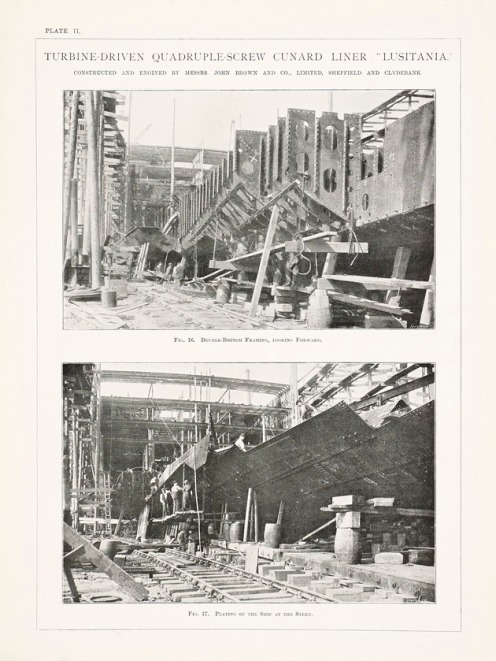

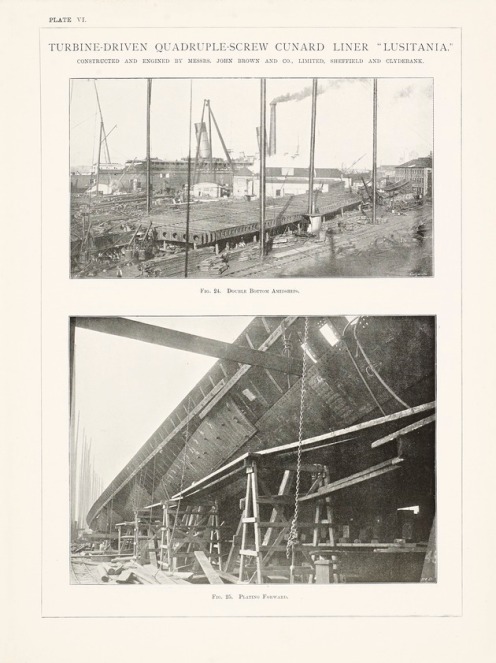

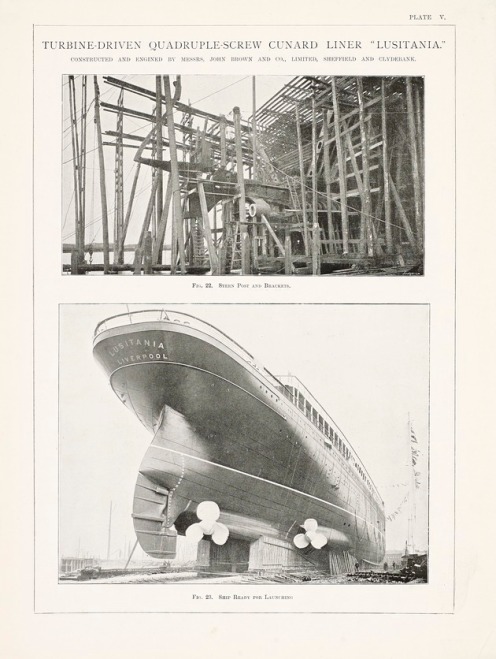
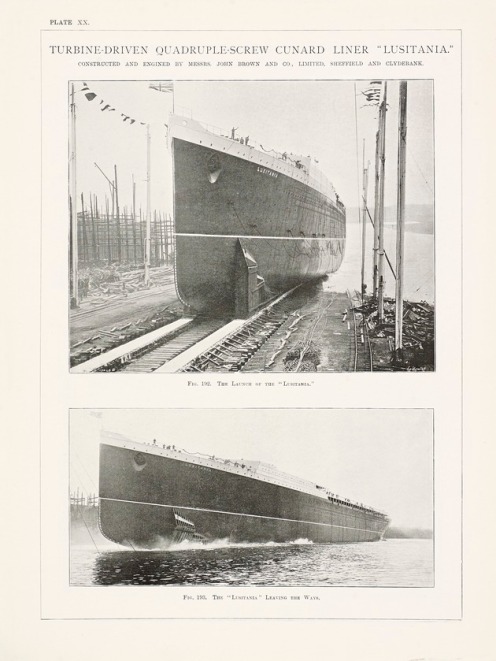







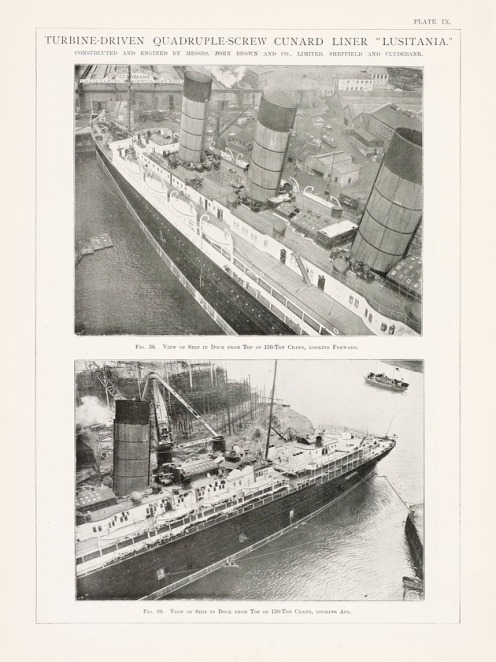


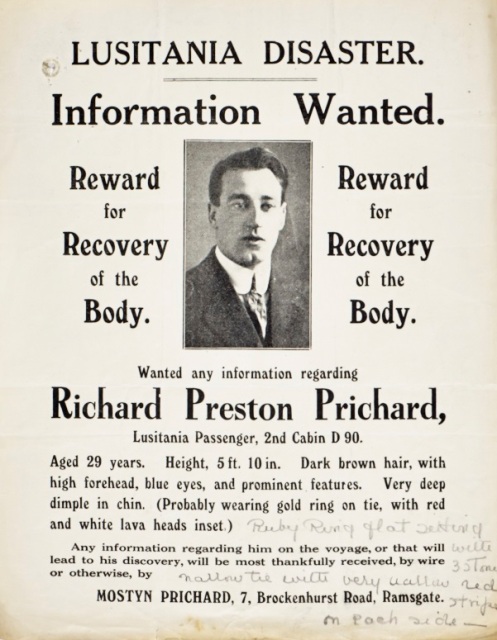
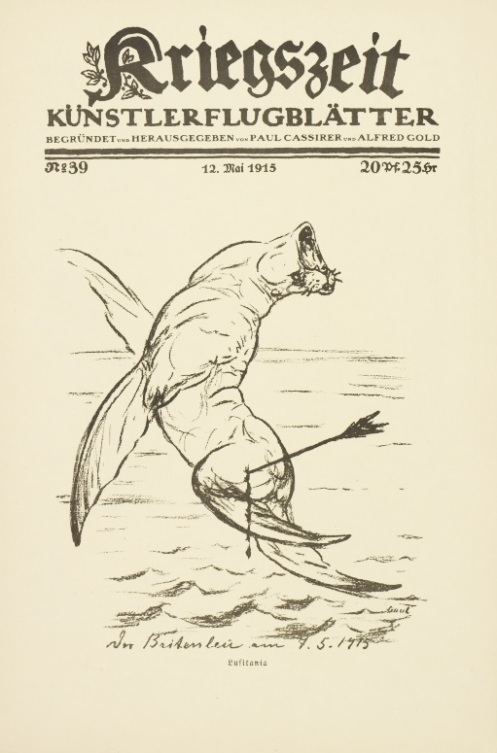



![XC2008_03_2_5_000[1]](https://wolfsonianfiulibrary.wordpress.com/wp-content/uploads/2015/05/xc2008_03_2_5_0001.jpg?w=497)

























